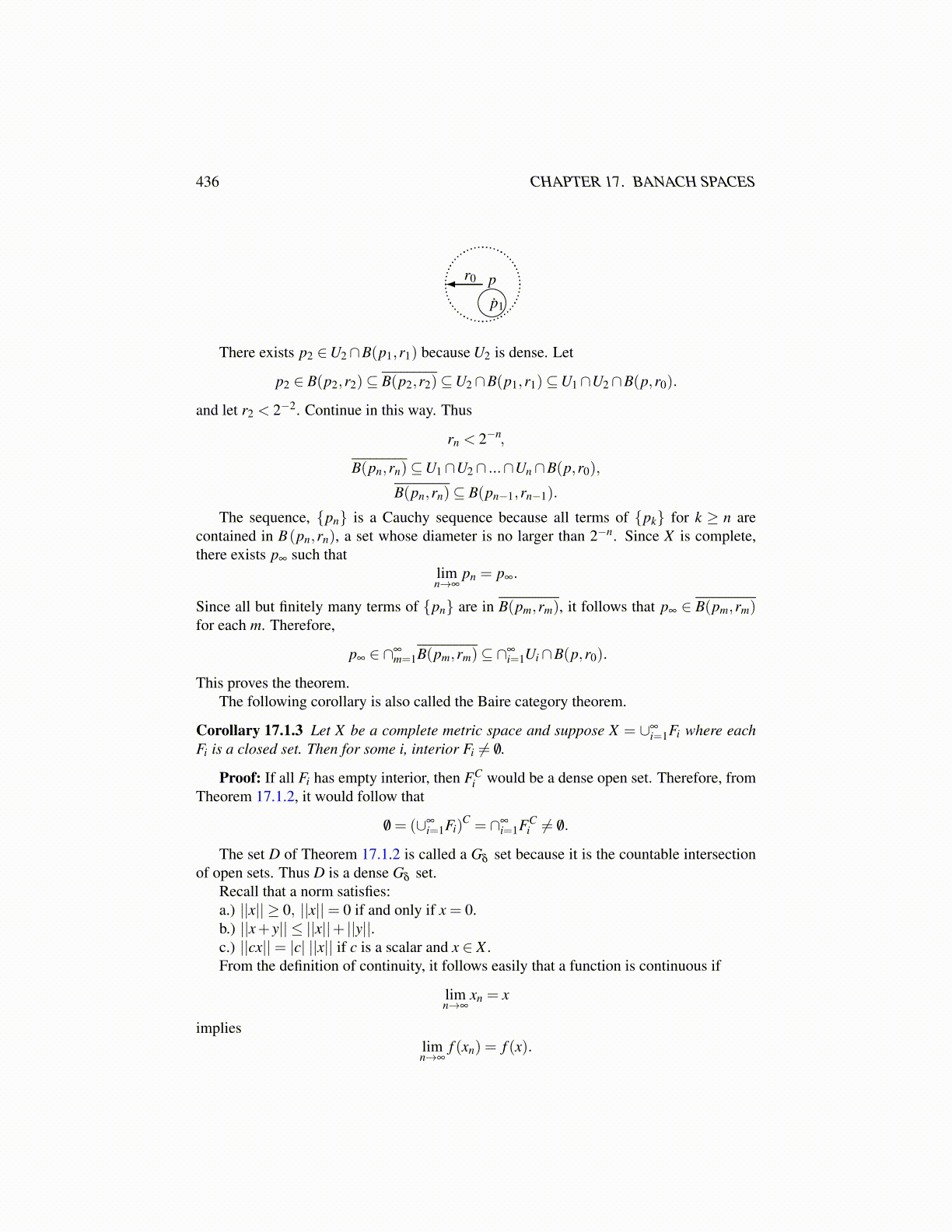
436 CHAPTER 17. BANACH SPACES
r0 p
p1·
There exists p2 ∈U2∩B(p1,r1) because U2 is dense. Let
p2 ∈ B(p2,r2)⊆ B(p2,r2)⊆U2∩B(p1,r1)⊆U1∩U2∩B(p,r0).
and let r2 < 2−2. Continue in this way. Thus
rn < 2−n,
B(pn,rn)⊆U1∩U2∩ ...∩Un∩B(p,r0),
B(pn,rn)⊆ B(pn−1,rn−1).
The sequence, {pn} is a Cauchy sequence because all terms of {pk} for k ≥ n arecontained in B(pn,rn), a set whose diameter is no larger than 2−n. Since X is complete,there exists p∞ such that
limn→∞
pn = p∞.
Since all but finitely many terms of {pn} are in B(pm,rm), it follows that p∞ ∈ B(pm,rm)for each m. Therefore,
p∞ ∈ ∩∞m=1B(pm,rm)⊆ ∩∞
i=1Ui∩B(p,r0).
This proves the theorem.The following corollary is also called the Baire category theorem.
Corollary 17.1.3 Let X be a complete metric space and suppose X = ∪∞i=1Fi where each
Fi is a closed set. Then for some i, interior Fi ̸= /0.
Proof: If all Fi has empty interior, then FCi would be a dense open set. Therefore, from
Theorem 17.1.2, it would follow that
/0 = (∪∞i=1Fi)
C = ∩∞i=1FC
i ̸= /0.
The set D of Theorem 17.1.2 is called a Gδ set because it is the countable intersectionof open sets. Thus D is a dense Gδ set.
Recall that a norm satisfies:a.) ||x|| ≥ 0, ||x||= 0 if and only if x = 0.b.) ||x+ y|| ≤ ||x||+ ||y||.c.) ||cx||= |c| ||x|| if c is a scalar and x ∈ X .From the definition of continuity, it follows easily that a function is continuous if
limn→∞
xn = x
implieslimn→∞
f (xn) = f (x).